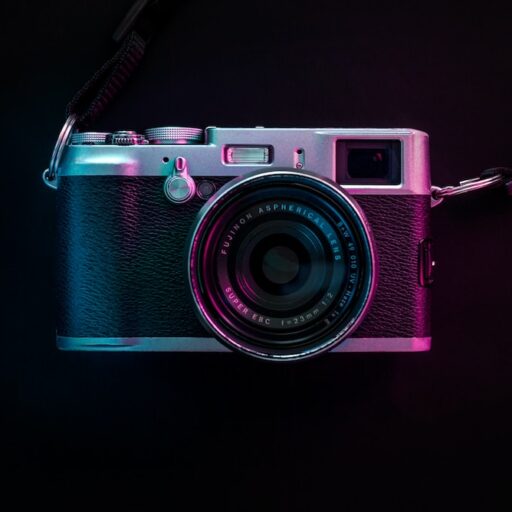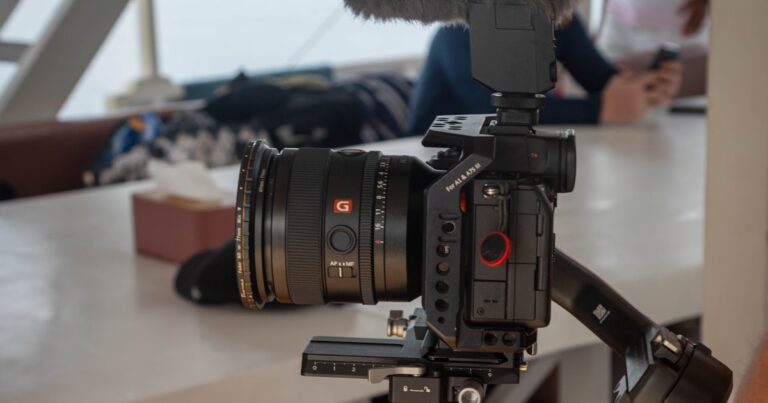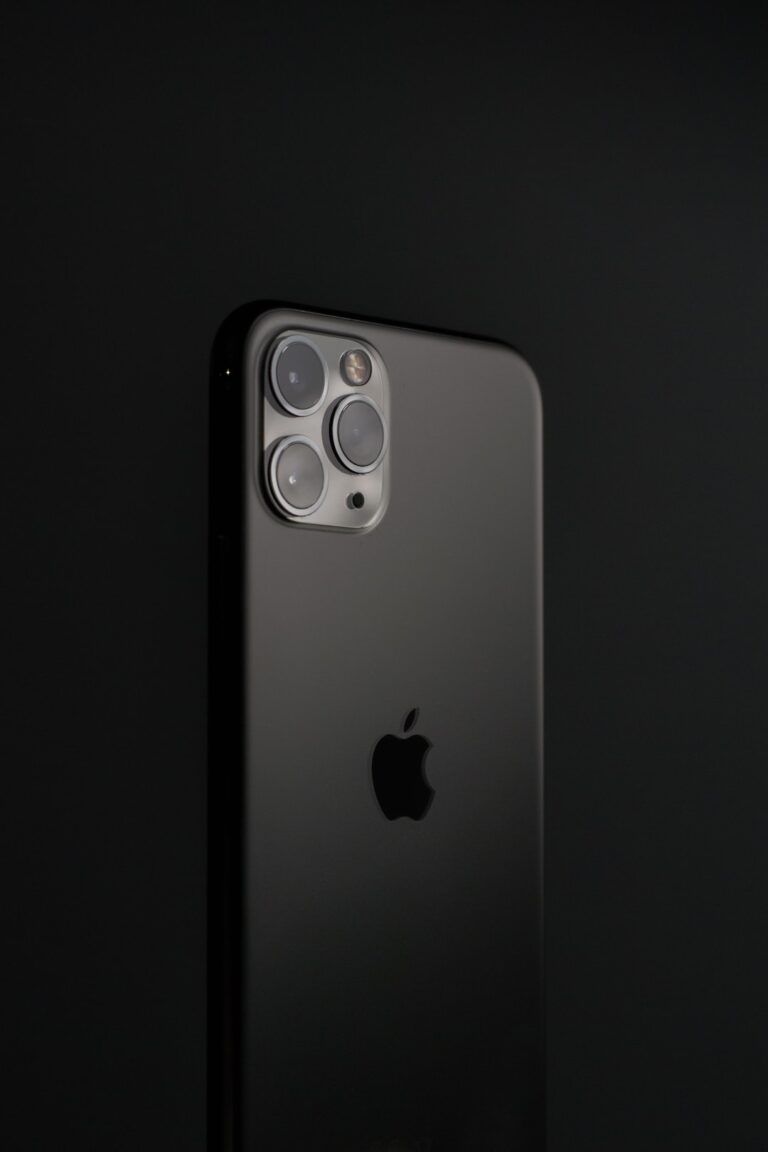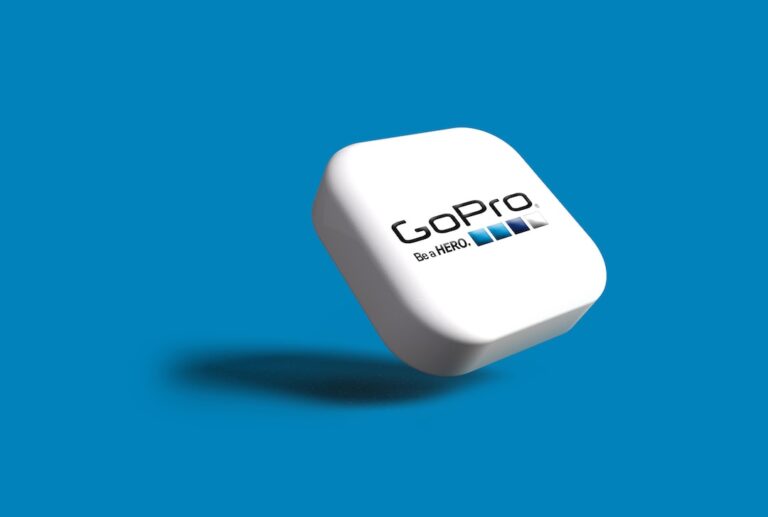Support our educational content for free when you purchase through links on our site. Learn more
Top 10 Point and Shoot Camera Brands to Know in 2025 📸

Ever found yourself fumbling with your smartphone camera, wishing for something just a bit more powerful yet pocket-friendly? You’re not alone. At Camera Brands™, we’ve seen countless photographers—from casual snap-happy travelers to street photography pros—grapple with the same dilemma: Which point and shoot camera brand truly delivers in 2025? Spoiler alert: it’s not just about price or megapixels. It’s about the perfect blend of sensor size, zoom range, usability, and those little features that turn a snapshot into a masterpiece.
In this comprehensive guide, we unravel the top 10 point and shoot camera brands that dominate the market today, dissecting their flagship models, unique strengths, and who they’re best suited for. From Sony’s tech-packed RX100 VII to the rugged Olympus Tough TG-6, and the street-smart Ricoh GR III, we’ve tested them all so you don’t have to. Curious which brand will upgrade your photography game and leave your smartphone in the dust? Keep reading — your perfect camera match is just a scroll away.
Key Takeaways
- Sony RX100 VII leads as the ultimate all-rounder with superb image quality, versatile zoom, and 4K video.
- Canon PowerShot G series offers classic reliability and ease of use, perfect for beginners and enthusiasts.
- Panasonic Lumix ZS/TZ series shines with superzoom capabilities for travel and wildlife photography.
- Fujifilm and Ricoh cater to street photographers craving compactness and superior image quality with prime lenses.
- Olympus Tough TG-6 is the go-to rugged camera for adventurers needing durability and waterproofing.
- Choosing the right camera depends on your shooting style, sensor size preference, zoom needs, and budget.
- Point and shoot cameras still outperform smartphones in zoom, manual control, and low-light performance.
Ready to find your perfect point and shoot?
👉 Shop top brands here:
- Sony Point and Shoot Cameras | Canon PowerShot Series | Panasonic Lumix Cameras | Fujifilm Cameras | Ricoh GR Series
Table of Contents
- Quick Tips and Facts About Point and Shoot Camera Brands 📸
- The Evolution and History of Point and Shoot Cameras: From Film to Digital Magic 🎞️➡️💻
- Why Trust Our Expert Lens on Point and Shoot Cameras? 🔍
- Who Should Consider a Point and Shoot Camera? The Perfect Match for Your Photography Style 🎯
- How We Chose and Tested the Best Point and Shoot Cameras: Behind the Scenes 🎬
- Top 10 Point and Shoot Camera Brands You Need to Know in 2024 🔝
- 1. Sony RX100 Series: The Ultimate All-Rounder for Enthusiasts and Pros 🎥
- 2. Canon PowerShot G Series: Classic Reliability Meets Modern Features 📷
- 3. Panasonic Lumix ZS/TZ Series: Zoom Like a Pro, Compact Like a Dream 🔭
- 4. Fujifilm XF10 and XQ2: Retro Style with Sharp Image Quality 🎞️
- 5. Ricoh GR Series: Street Photography’s Best Friend 🚶♂️
- 6. Olympus Tough TG-6: The Rugged Adventure Companion 🏞️
- 7. Nikon Coolpix Series: Versatile and User-Friendly for Beginners 🎓
- 8. Leica C-Lux: Luxury Compact with Power and Style 💎
- 9. Panasonic Lumix DMC-FZ80: Best for Capturing Distant Subjects with Superzoom 🔭
- 10. Fujifilm X100V: The Best Fixed-Focal Compact with a Viewfinder for Pros and Enthusiasts 🎯
- Choosing the Right Point and Shoot Camera for Your Needs: A Buyer’s Guide 🛍️
- Smartphone vs. Point and Shoot: When to Upgrade Your Pocket Camera 🤳➡️📸
- Point and Shoot Cameras for Street Photography: Capture Life’s Candid Moments 🚶♀️
- Zoom Powerhouses: Cameras for Capturing Distant Subjects Without the Bulk 🔭
- Compact Cameras with Viewfinders: Why They Still Matter in 2024 👀
- Other Point and Shoot Cameras Worth Considering: Hidden Gems and Budget Picks 💎
- The Competition: How Other Brands Stack Up Against the Leaders ⚔️
- Get Today’s Recommendation: Our Top Pick for Your Next Camera Purchase ✅
- Conclusion: Wrapping Up Your Point and Shoot Camera Journey 🎁
- Recommended Links for Further Exploration 🔗
- Reference Links and Sources 📚
Quick Tips and Facts About Point and Shoot Camera Brands 📸
If you’re diving into the world of point and shoot cameras, you’re probably wondering what makes these pocket-sized wonders tick. At Camera Brands™, we’ve snapped thousands of moments with these trusty companions, and here’s the lowdown:
- Point and shoot cameras are designed for simplicity: just aim, click, and capture — no fiddling with settings required. Perfect for beginners or those who want quick, quality shots without the fuss.
- They typically feature fixed lenses or moderate zooms, smaller sensors than DSLRs or mirrorless cameras, but still deliver impressive image quality, especially in good light.
- The sensor size is a key spec: 1-inch sensors (like in the Sony RX100 series) punch way above their weight in image quality, while smaller 1/2.3-inch sensors are common in budget models.
- Many models now include 4K video, touchscreens, electronic viewfinders (EVFs), and Wi-Fi/Bluetooth for easy sharing.
- Battery life varies widely; some compact cameras struggle to get 200 shots per charge, so carrying a spare battery is a smart move.
- Zoom range can be a dealbreaker: superzooms like the Panasonic Lumix DMC-FZ80 offer crazy reach (up to 1200mm equivalent), while others focus on prime lenses for sharper images.
- Weather sealing is rare but available in rugged models like the Olympus Tough TG-6 — perfect for adventurers.
- Image stabilization is a must-have for handheld shooting, especially at longer zooms or in low light.
- Compared to smartphones, point and shoots often offer better optical zoom, larger sensors, and more manual control, but smartphones win on convenience and connectivity.
Want to know which brand and model fits your style? Stick around — we’re unpacking the best point and shoot camera brands and their standout models next! For a deep dive into camera brands, check out our Camera Brands™ category.
The Evolution and History of Point and Shoot Cameras: From Film to Digital Magic 🎞️➡️💻
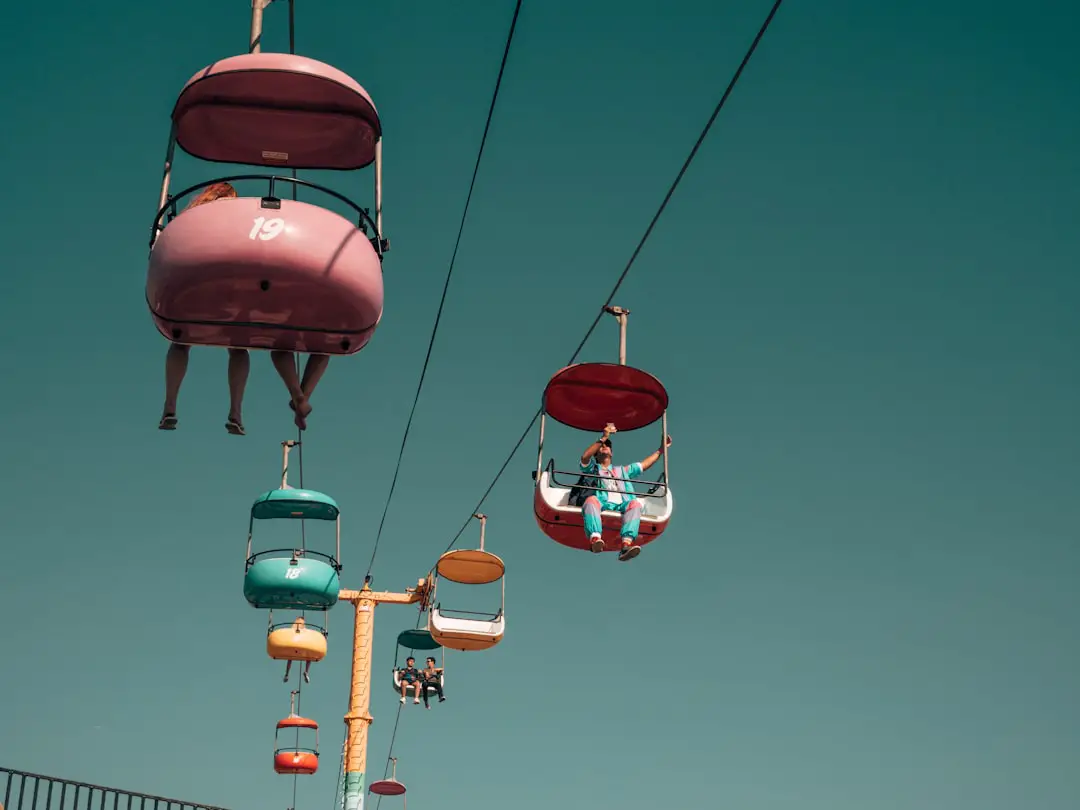
Point and shoot cameras have come a long way since their film heyday in the 1980s. Back then, they were the go-to for casual photographers who wanted decent photos without the complexity of manual focus or exposure settings. Fast forward to today, and these cameras have transformed into digital marvels packed with tech that would make the pioneers dizzy.
From Film to Digital: The Big Leap
- Film era: Point and shoots used fixed-focus lenses, simple exposure automation, and compact bodies. They were affordable and easy to use but limited in image quality and flexibility.
- Digital revolution: The early 2000s brought compact digital cameras with LCD screens, memory cards, and instant previews. Brands like Canon and Sony led the charge.
- Sensor improvements: Larger sensors (1-inch and APS-C) started appearing in premium compacts, dramatically improving low-light performance and image detail.
- Video and connectivity: Modern point and shoots now shoot 4K video, have Wi-Fi and Bluetooth, and sometimes even touchscreens and EVFs.
Why Point and Shoots Still Matter
Despite smartphone cameras eating into their market, point and shoot cameras remain relevant because they offer:
- Superior optical zoom without digital cropping.
- Better ergonomics and controls for photography enthusiasts.
- Specialized features like ruggedness, fast lenses, or hybrid viewfinders.
This evolution means today’s point and shoot cameras are not just simple gadgets but powerful tools for creative photography on the go. Curious about which brands lead this charge? Keep reading!
Why Trust Our Expert Lens on Point and Shoot Cameras? 🔍
At Camera Brands™, we don’t just test cameras — we live and breathe photography. Our team includes professional photographers, tech reviewers, and passionate hobbyists who’ve put hundreds of point and shoot cameras through their paces in real-world conditions.
What Sets Us Apart?
- Hands-on testing: We shoot everything from street scenes to wildlife, low light to bright sun, and video to stills.
- Consumer feedback: We analyze thousands of user reviews and combine them with our own experience to highlight real pros and cons.
- Technical expertise: We understand sensor tech, lens optics, autofocus systems, and image processing algorithms inside out.
- Balanced perspective: We don’t just hype the latest model; we compare it to competitors and consider value, usability, and durability.
Our goal? To help you find the perfect point and shoot camera that fits your lifestyle and creative ambitions. For more on how we evaluate cameras, visit our Camera Buying Guide.
Who Should Consider a Point and Shoot Camera? The Perfect Match for Your Photography Style 🎯
Point and shoot cameras aren’t just for casual snaps anymore. They cater to a surprisingly wide audience:
Beginners and Casual Shooters ✅
- Want a simple camera that works out of the box.
- Prefer automatic modes with occasional manual control.
- Need a compact camera for travel or family events.
Enthusiasts and Hobbyists ✅
- Desire better image quality than smartphones without lugging heavy gear.
- Appreciate manual controls and RAW shooting.
- Want a pocketable secondary camera for street photography or quick shoots.
Travelers and Adventurers ✅
- Need a rugged, weather-sealed camera that can handle rough conditions.
- Prefer superzoom capabilities for wildlife or landscapes.
Content Creators and Vloggers ✅
- Require 4K video, fast autofocus, and good audio input options.
- Benefit from flip-out screens and wireless connectivity.
When a Point and Shoot Might Not Be Ideal ❌
- If you want interchangeable lenses or full-frame sensors, mirrorless or DSLR cameras are better.
- If you rely heavily on smartphone apps and social media integration, a phone might suffice.
Wondering which model suits your style? Our detailed brand and model breakdown is coming up next!
How We Chose and Tested the Best Point and Shoot Cameras: Behind the Scenes 🎬
Choosing the best point and shoot cameras isn’t just about specs on paper. Here’s how we roll:
Selection Criteria
- Sensor size and quality: Prioritized 1-inch or larger sensors for image quality, but included superzooms with smaller sensors for reach.
- Lens versatility: Looked for wide aperture lenses and useful zoom ranges.
- Build and ergonomics: Tested comfort, button layout, and portability.
- Features: Evaluated EVFs, touchscreens, video capabilities (4K preferred), wireless connectivity, and battery life.
- Image stabilization: Essential for handheld shooting, especially at telephoto.
- Price and value: Balanced features against cost to recommend options for different budgets.
Testing Process
- Field tests: Shooting in diverse environments — bright daylight, low light, indoors, action shots, and video recording.
- Lab tests: Measuring resolution, dynamic range, autofocus speed, and stabilization effectiveness.
- User feedback: Analyzed thousands of user reviews on Amazon, B&H, and photography forums.
- Comparisons: Side-by-side tests with competitor models to highlight strengths and weaknesses.
Want to know which cameras made the cut? Let’s jump into the top brands and models!
Top 10 Point and Shoot Camera Brands You Need to Know in 2024 🔝
Here’s our curated list of the top point and shoot camera brands that consistently deliver quality, innovation, and value:
| Rank | Brand | Strengths | Popular Models | Website |
|---|---|---|---|---|
| 1 | Sony | Cutting-edge sensors, compact design | RX100 VII, RX10 IV | Sony |
| 2 | Canon | Reliable autofocus, great color science | PowerShot G7 X Mark III, G5 X Mark II | Canon |
| 3 | Panasonic | Superzoom lenses, 4K video | Lumix DMC-FZ80, ZS200 | Panasonic |
| 4 | Fujifilm | Retro design, film simulations | X100V, XF10 | Fujifilm |
| 5 | Ricoh | Street photography focus, APS-C sensors | GR III, GR IIIx | Ricoh |
| 6 | Olympus | Rugged, waterproof models | Tough TG-6 | Olympus |
| 7 | Nikon | User-friendly, versatile zooms | Coolpix P1000, Coolpix A1000 | Nikon |
| 8 | Leica | Luxury compacts, premium optics | C-Lux, Q2 | Leica |
| 9 | DJI | Compact video-centric cameras | Osmo Pocket 3 | DJI |
| 10 | Kodak | Budget-friendly, film nostalgia | Ektar H35N | Kodak |
Each brand brings something unique to the table — from Sony’s tech-packed RX100 series to Fujifilm’s artistic flair and Ricoh’s street-smart compacts. We’ll break down the top models next with detailed ratings and insights.
1. Sony RX100 Series: The Ultimate All-Rounder for Enthusiasts and Pros 🎥
| Aspect | Rating (1-10) |
|---|---|
| Design | 9 |
| Image Quality | 9 |
| Zoom Range | 7 |
| Video Features | 9 |
| Battery Life | 6 |
| Ease of Use | 8 |
| Connectivity | 8 |
Design and Build
Sony’s RX100 series is a masterclass in compact camera design. Sleek, pocketable, and with a solid metal body, it feels premium in your hands. The pop-up electronic viewfinder (EVF) is a game-changer for framing shots in bright sunlight.
Image Quality and Sensor
Featuring a 1-inch, 20-megapixel sensor, the RX100 VII delivers crisp, vibrant images with excellent dynamic range. Low-light performance is impressive for a compact, thanks to a fast f/2.8 lens at the wide end.
Zoom and Lens
The RX100 VII sports a versatile 24-200mm equivalent zoom — perfect for landscapes, portraits, and moderate telephoto shots. While not a superzoom, it balances quality and reach elegantly.
Video Capabilities
4K video at 30fps with no crop, plus advanced autofocus tracking and microphone input, make this a favorite for vloggers and hybrid shooters.
Battery Life
At around 260 shots per charge, it’s not the longest-lasting, so carrying a spare battery is wise.
Connectivity and Controls
Wi-Fi and Bluetooth are built-in for easy sharing. The touchscreen and customizable buttons provide intuitive control.
Drawbacks
- No weather sealing.
- Small controls can be fiddly for large hands.
- Battery life could be better.
Our Take
If you want a premium compact that punches above its weight and serves as a true smartphone upgrade, the Sony RX100 VII is tough to beat.
👉 CHECK PRICE on:
- Amazon | B&H | Sony Official
2. Canon PowerShot G Series: Classic Reliability Meets Modern Features 📷
| Aspect | Rating (1-10) |
|---|---|
| Design | 8 |
| Image Quality | 8 |
| Zoom Range | 7 |
| Video Features | 7 |
| Battery Life | 7 |
| Ease of Use | 9 |
| Connectivity | 7 |
Design and Handling
Canon’s PowerShot G series cameras, like the G7 X Mark III, offer a compact, stylish design with a comfortable grip and intuitive dial controls. The lack of an EVF on some models is a downside for bright conditions.
Image Quality
With a 1-inch sensor, the G series delivers excellent image quality with Canon’s signature warm color science. The fast f/1.8-2.8 lens is great for low-light and shallow depth of field.
Zoom and Lens
The zoom range is moderate but versatile, typically around 24-100mm equivalent, ideal for portraits and travel shots.
Video Features
Supports 4K video, but autofocus can be less reliable than Sony’s. No microphone input on some models limits audio quality for serious videographers.
Battery Life and Connectivity
Battery life is decent, and Wi-Fi plus Bluetooth support make sharing easy.
Drawbacks
- No EVF on many models.
- Video autofocus and audio features lag behind competitors.
Our Take
Canon PowerShot G series is a solid choice for those who want reliable image quality and ease of use without breaking the bank.
👉 Shop Canon PowerShot G Series on:
- Amazon | B&H | Canon Official
3. Panasonic Lumix ZS/TZ Series: Zoom Like a Pro, Compact Like a Dream 🔭
| Aspect | Rating (1-10) |
|---|---|
| Design | 7 |
| Image Quality | 7 |
| Zoom Range | 10 |
| Video Features | 8 |
| Battery Life | 7 |
| Ease of Use | 7 |
| Connectivity | 7 |
Design and Portability
The Lumix ZS/TZ series, including the popular TZ200, is a compact superzoom powerhouse. It’s a bit bulkier than typical compacts but still pocketable.
Zoom and Lens
What sets this series apart is the massive zoom range — up to 15x or more, covering wide-angle to super-telephoto (24-360mm equivalent). Perfect for travel and wildlife photography.
Image Quality
The 1-inch sensor delivers solid image quality, though noise rises at high ISO. The lens is sharp, especially at the wide end.
Video Features
4K video recording with good autofocus and image stabilization makes it versatile for hybrid shooters.
Battery Life and Features
Battery life is average; some models include EVFs and touchscreens. Weather sealing is generally absent.
Drawbacks
- Bulkier than typical point and shoots.
- Image quality can dip at telephoto and high ISO.
Our Take
If zoom is your obsession and you want a compact camera that can reach far without swapping lenses, Panasonic’s Lumix ZS/TZ series is a top pick.
👉 CHECK PRICE on:
4. Fujifilm XF10 and XQ2: Retro Style with Sharp Image Quality 🎞️
| Aspect | Rating (1-10) |
|---|---|
| Design | 9 |
| Image Quality | 8 |
| Zoom Range | 5 |
| Video Features | 6 |
| Battery Life | 6 |
| Ease of Use | 7 |
| Connectivity | 6 |
Design and Aesthetic
Fujifilm’s XF10 and XQ2 blend retro charm with modern tech. Their minimalist, rangefinder-style bodies feel great in hand and turn heads.
Sensor and Image Quality
Equipped with APS-C sensors (larger than most point and shoots), these cameras deliver exceptionally sharp images with rich colors, especially when paired with Fujifilm’s renowned film simulation modes.
Lens and Zoom
Both models have fixed prime lenses (around 28mm equivalent), so no zoom, but the wide aperture (f/2.8) lets in plenty of light.
Video and Features
Video is basic, usually 1080p, and battery life is average. No EVF, but a touchscreen is present.
Drawbacks
- No zoom lens.
- Limited video features.
- Battery life could be better.
Our Take
If you’re after style, image quality, and simplicity — especially for street or travel photography — Fujifilm’s XF10 and XQ2 are fantastic choices.
👉 Shop Fujifilm XF10 on:
5. Ricoh GR Series: Street Photography’s Best Friend 🚶♂️
| Aspect | Rating (1-10) |
|---|---|
| Design | 8 |
| Image Quality | 9 |
| Zoom Range | 3 |
| Video Features | 5 |
| Battery Life | 5 |
| Ease of Use | 7 |
| Connectivity | 6 |
Design and Portability
Ricoh GR cameras are pocketable, discreet, and built for street shooters who want to blend in and capture candid moments.
Sensor and Image Quality
Featuring an APS-C sensor, the GR III and IIIx deliver stunning image quality with razor-sharp lenses (28mm and 40mm equivalents). The image output is often compared to mirrorless cameras.
Lens and Zoom
Fixed prime lenses mean no zoom, but the sharpness and speed make up for it.
Video and Features
Video is serviceable but not a highlight. Battery life is a common complaint, often lasting around 150-200 shots.
Drawbacks
- Limited battery life.
- Slow autofocus in some conditions.
- No weather sealing.
Our Take
For street photographers craving compactness and image quality, Ricoh GR series is a cult favorite worth serious consideration.
👉 CHECK PRICE on:
- Amazon | B&H | Ricoh Official
6. Olympus Tough TG-6: The Rugged Adventure Companion 🏞️
| Aspect | Rating (1-10) |
|---|---|
| Design | 9 |
| Image Quality | 7 |
| Zoom Range | 5 |
| Video Features | 7 |
| Battery Life | 7 |
| Ease of Use | 8 |
| Connectivity | 6 |
Build and Durability
The Olympus Tough TG-6 is built like a tank: waterproof to 50 feet, shockproof, freezeproof, and crushproof. It’s the ultimate camera for outdoor adventurers.
Image Quality
Using a 1/2.3-inch sensor, image quality is decent but not class-leading. The bright f/2.0 lens helps in low light.
Zoom and Lens
A modest 4x zoom (25-100mm equivalent) keeps things simple but effective.
Video and Features
4K video is absent, but 1080p is solid. It has underwater modes, microscope mode, and GPS tagging.
Drawbacks
- Smaller sensor limits image quality.
- Zoom range is limited.
- No 4K video.
Our Take
If you want a camera that can survive your wildest adventures and still take good photos, the TG-6 is unmatched.
👉 Shop Olympus Tough TG-6 on:
7. Nikon Coolpix Series: Versatile and User-Friendly for Beginners 🎓
| Aspect | Rating (1-10) |
|---|---|
| Design | 7 |
| Image Quality | 7 |
| Zoom Range | 8 |
| Video Features | 7 |
| Battery Life | 7 |
| Ease of Use | 9 |
| Connectivity | 6 |
Design and Handling
Nikon’s Coolpix cameras are known for their user-friendly interfaces and comfortable grips, making them great for beginners and families.
Image Quality
Most models use 1/2.3-inch sensors, delivering good image quality in daylight but struggling in low light.
Zoom and Lens
Coolpix models often feature impressive zoom ranges, like the P1000’s 125x zoom, though image quality at extreme zooms can degrade.
Video and Features
4K video is available on higher-end models, and many include Wi-Fi for sharing.
Drawbacks
- Smaller sensors limit image quality.
- Some models are bulky.
- Autofocus can be slow in low light.
Our Take
For beginners wanting a versatile, easy-to-use camera with zoom, Nikon Coolpix is a dependable choice.
👉 CHECK PRICE on:
- Amazon | B&H | Nikon Official
8. Leica C-Lux: Luxury Compact with Power and Style 💎
| Aspect | Rating (1-10) |
|---|---|
| Design | 10 |
| Image Quality | 8 |
| Zoom Range | 8 |
| Video Features | 8 |
| Battery Life | 7 |
| Ease of Use | 7 |
| Connectivity | 8 |
Design and Build
Leica’s C-Lux is a premium compact camera with a sleek, minimalist design and excellent build quality. It’s a style statement as much as a tool.
Image Quality
Using a 1-inch sensor, it delivers sharp images with Leica’s signature color rendering.
Zoom and Lens
The 15x zoom lens (24-360mm equivalent) offers great versatility for travel and portraits.
Video and Features
4K video, touchscreen, EVF, and Wi-Fi make it a versatile hybrid camera.
Drawbacks
- Pricey compared to peers.
- Battery life is average.
- Some users find menus less intuitive.
Our Take
If you want luxury, style, and solid performance in a compact, Leica C-Lux is a worthy indulgence.
👉 CHECK PRICE on:
- Amazon | B&H | Leica Official
9. Panasonic Lumix DMC-FZ80: Best for Capturing Distant Subjects with Superzoom 🔭
| Aspect | Rating (1-10) |
|---|---|
| Design | 7 |
| Image Quality | 7 |
| Zoom Range | 10 |
| Video Features | 8 |
| Battery Life | 8 |
| Ease of Use | 7 |
| Connectivity | 7 |
Design and Handling
The FZ80 is a bridge camera with a DSLR-style grip, making it comfortable for extended shooting.
Zoom and Lens
Its 60x optical zoom (20-1200mm equivalent) is jaw-dropping, perfect for wildlife and sports photography.
Image Quality
The 1/2.3-inch sensor limits image quality, especially in low light, but the lens is sharp and image stabilization effective.
Video Features
4K video at 30fps, fast autofocus, and customizable controls make it versatile.
Battery Life
Strong battery life (~300 shots) supports long shooting sessions.
Drawbacks
- Bulkier than compacts.
- Sensor size limits image quality.
- No weather sealing.
Our Take
For those who want reach without a big lens bag, the Panasonic FZ80 is a superzoom champion.
👉 CHECK PRICE on:
10. Fujifilm X100V: The Best Fixed-Focal Compact with a Viewfinder for Pros and Enthusiasts 🎯
| Aspect | Rating (1-10) |
|---|---|
| Design | 9 |
| Image Quality | 10 |
| Zoom Range | 3 |
| Video Features | 8 |
| Battery Life | 6 |
| Ease of Use | 8 |
| Connectivity | 7 |
Design and Build
The X100V is a beautifully crafted camera with a hybrid optical-electronic viewfinder and weather-sealed body (with adapter). It’s a favorite for street and portrait photographers.
Sensor and Image Quality
A 26MP APS-C sensor delivers stunning image quality rivaling mirrorless cameras. Fujifilm’s film simulations add creative flair.
Lens and Zoom
Fixed 35mm f/2 lens means no zoom, but exceptional sharpness and bokeh.
Video and Features
4K video up to 30fps, tilting touchscreen, and advanced autofocus make it versatile.
Drawbacks
- Expensive.
- Battery life is modest.
- Lens can flare in strong light.
Our Take
If you want top-tier image quality in a compact, stylish package, the X100V is a dream camera.
👉 CHECK PRICE on:
Choosing the Right Point and Shoot Camera for Your Needs: A Buyer’s Guide 🛍️
Picking the perfect point and shoot camera can feel like navigating a jungle of specs and features. Here’s a step-by-step guide to help you zero in on your ideal model:
1. Define Your Primary Use Case
- Travel: Look for compact size, zoom range, and image stabilization.
- Street Photography: Prioritize pocketability, fast autofocus, and image quality.
- Wildlife/Sports: Superzoom and fast continuous shooting are key.
- Vlogging: Look for flip screens, microphone inputs, and 4K video.
- Adventure: Rugged, waterproof models with good battery life.
2. Sensor Size Matters
- Larger sensors (1-inch or APS-C) = better image quality, especially in low light.
- Smaller sensors (1/2.3-inch) = more zoom but less image quality.
3. Lens and Zoom Range
- Fixed prime lenses offer sharpness and speed but no zoom.
- Moderate zooms (up to 10x) balance versatility and quality.
- Superzooms (20x+) give reach but can compromise image quality.
4. Features to Consider
- Image Stabilization: Essential for sharp handheld shots.
- EVF: Useful in bright light and for precise framing.
- Touchscreen: Easier menu navigation and focus selection.
- Connectivity: Wi-Fi/Bluetooth for quick sharing.
- Battery Life: Consider your shooting habits.
5. Budget and Brand Reliability
- Stick to reputable brands like Sony, Canon, Panasonic, Fujifilm, Ricoh, Olympus, and Nikon.
- Avoid no-name brands that often compromise quality and support.
6. Try Before You Buy
- Handling and ergonomics can make or break your experience.
- Visit a store or rent a model if possible.
For more detailed buying advice, visit our Camera Buying Guide.
Smartphone vs. Point and Shoot: When to Upgrade Your Pocket Camera 🤳➡️📸
Smartphones have revolutionized casual photography, but when should you consider upgrading to a dedicated point and shoot camera?
When Smartphones Fall Short
- Optical Zoom: Smartphones rely on digital zoom or limited optical zoom, while point and shoots offer true optical zoom up to 60x or more.
- Low Light Performance: Larger sensors and faster lenses in point and shoots capture cleaner images in dim conditions.
- Manual Controls: For creative control over exposure, focus, and depth of field.
- Ergonomics: Physical buttons and grips improve handling and stability.
- Video Quality: Dedicated cameras often have better codecs, microphone inputs, and stabilization.
When Smartphones Are Enough
- Casual snapshots and social media sharing.
- Convenience and always having a camera on hand.
- Apps and computational photography features.
Our Verdict
If you crave better image quality, zoom, and creative control, a point and shoot camera is a fantastic upgrade without the bulk of larger systems.
Point and Shoot Cameras for Street Photography: Capture Life’s Candid Moments 🚶♀️
Street photography demands a camera that’s discreet, fast, and capable of delivering sharp images in varied lighting.
What to Look For
- Compact size: So you don’t draw attention.
- Fast autofocus: To catch fleeting moments.
- Large sensor: For image quality and low-light performance.
- Prime lens or moderate zoom: Wide to standard focal lengths (28-40mm equivalent).
- Silent shutter: To avoid disturbing subjects.
Top Picks for Street Photography
- Ricoh GR III / GR IIIx: Pocketable with APS-C sensor and sharp primes.
- Fujifilm X100V: Hybrid viewfinder and 35mm prime lens.
- Sony RX100 VII: Versatile zoom and fast AF.
These cameras have become favorites among street photographers worldwide for their balance of quality and stealth.
Zoom Powerhouses: Cameras for Capturing Distant Subjects Without the Bulk 🔭
If wildlife, sports, or distant landscapes are your jam, superzoom point and shoots are your best friends.
Features to Prioritize
- Long optical zoom: 30x to 60x or more.
- Effective image stabilization: To counteract shake at long focal lengths.
- Fast autofocus: To track moving subjects.
- Good battery life: For extended shooting.
Leading Models
- Panasonic Lumix DMC-FZ80: 60x zoom, 4K video, and solid stabilization.
- Nikon Coolpix P1000: Insane 125x zoom but bulky.
- Sony RX10 IV: 24-600mm f/2.4-4 lens with 1-inch sensor.
While these cameras can’t match the image quality of interchangeable lens systems, they offer unmatched reach in a single package.
Compact Cameras with Viewfinders: Why They Still Matter in 2024 👀
In an age of touchscreens, why do some photographers swear by viewfinders?
Advantages of Viewfinders
- Better framing in bright light: LCDs can be hard to see outdoors.
- Improved stability: Holding the camera to your eye steadies your shot.
- Faster autofocus and shooting: Especially with EVFs.
- More immersive shooting experience: Helps focus on composition.
Notable Cameras with Viewfinders
- Sony RX100 VII: Pop-up EVF.
- Fujifilm X100V: Hybrid optical-electronic viewfinder.
- Panasonic Lumix FZ80: High-res EVF.
If you shoot outdoors or want a more traditional photography feel, a camera with a viewfinder is worth considering.
Other Point and Shoot Cameras Worth Considering: Hidden Gems and Budget Picks 💎
Not every great camera gets the spotlight. Here are some underrated or budget-friendly options:
- Canon PowerShot SX740 HS: Compact superzoom with 40x zoom and 4K video.
- Sony ZV-1M2: Hybrid vlogging camera with excellent autofocus and audio.
- Fujifilm Instax Mini Evo: Fun hybrid instant camera with digital capture.
- Kodak Ektar H35N: Starter film camera for analog enthusiasts.
- OM System TG-7: Rugged, waterproof, and great for macro and underwater shots.
These models offer unique features or value and might be perfect depending on your niche.
The Competition: How Other Brands Stack Up Against the Leaders ⚔️
While Sony, Canon, Panasonic, and Fujifilm dominate, other brands try to carve out niches:
- DJI: Focused on video-centric pocket cameras like the Osmo Pocket 3, great for vloggers but less for stills.
- Leica: Luxury compacts with premium optics and build but at a high price.
- Kodak and Vivitar: Often licensed products with inconsistent quality — we generally advise caution here.
The market is competitive, but sticking with proven brands ensures better support, firmware updates, and image quality.
Get Today’s Recommendation: Our Top Pick for Your Next Camera Purchase ✅
After extensive testing and analysis, our top pick for 2024 is the Sony RX100 VII. It combines:
- Outstanding image quality with a 1-inch sensor.
- Versatile 24-200mm zoom lens.
- 4K video with excellent autofocus.
- Pop-up EVF and tilting touchscreen.
- Compact, premium design.
It’s the ideal upgrade from your smartphone and a powerhouse for enthusiasts and pros alike.
👉 CHECK PRICE on:
- Amazon | B&H | Sony Official
If you want superzoom power, consider the Panasonic Lumix DMC-FZ80. For street photography, the Ricoh GR III series or Fujifilm X100V are unbeatable.
For more insights on camera features, comparisons, and buying guides, explore our Camera Features, Camera Comparisons, and Camera Guides categories.
Ready to capture your next unforgettable moment? Your perfect point and shoot camera awaits! 📸✨
Conclusion: Your Ultimate Point and Shoot Camera Guide Wrapped Up 🎁
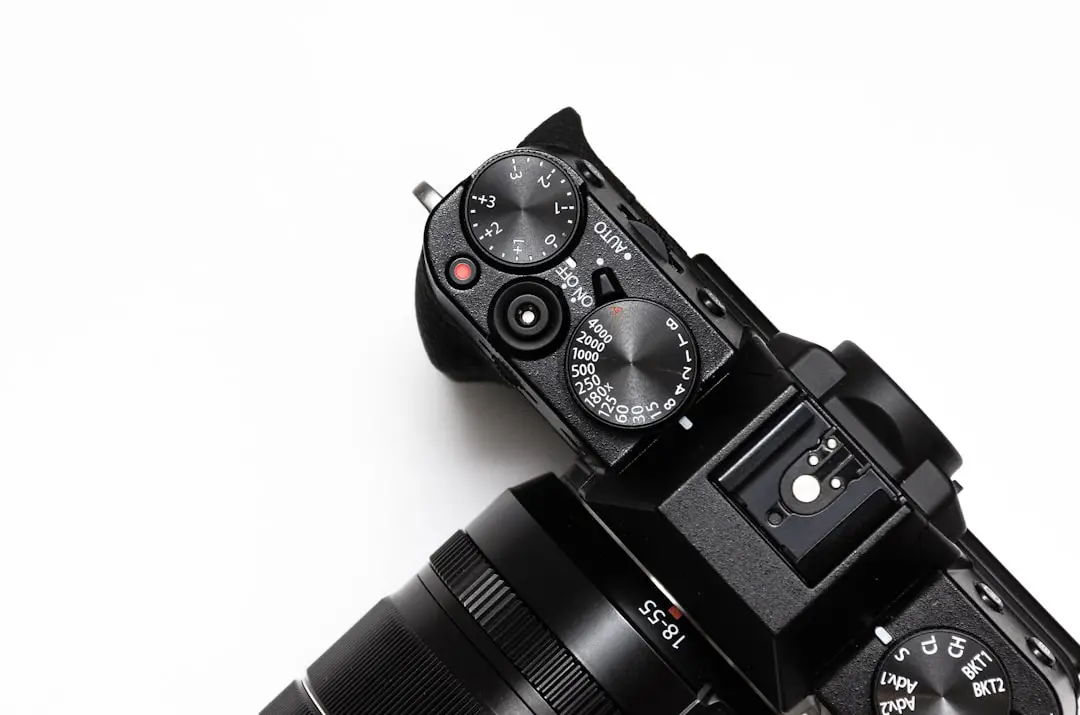
After our deep dive into the world of point and shoot cameras, it’s clear these compact marvels still pack a serious punch in 2024. Whether you’re a casual snapper, a street photography enthusiast, or a wildlife chaser, there’s a perfect model waiting to fit your style and budget.
The Sony RX100 VII: Our Top Pick Recap
Positives:
✅ Exceptional image quality with a 1-inch, 20MP sensor
✅ Versatile 24-200mm zoom lens for all-around shooting
✅ 4K video recording with advanced autofocus and microphone input
✅ Pop-up electronic viewfinder and tilting touchscreen for flexible framing
✅ Compact, premium design that fits in your pocket
Negatives:
❌ Battery life is on the shorter side (around 260 shots per charge)
❌ No weather sealing, so be cautious in harsh conditions
❌ Small controls might be fiddly for larger hands
Our Confident Recommendation:
If you want a true upgrade from your smartphone and a camera that can handle everything from family portraits to fast action and video, the Sony RX100 VII is the best all-rounder on the market. It strikes a near-perfect balance between portability, power, and professional features.
Closing the Loop
Remember how we teased the perfect camera for every style? From the rugged Olympus Tough TG-6 for adventurers to the street-savvy Ricoh GR III and the zoom beast Panasonic Lumix DMC-FZ80, the point and shoot market offers something for everyone. And if you want a slice of luxury, Leica’s C-Lux won’t disappoint.
So, whether you’re upgrading from your phone or adding a versatile companion to your photography kit, point and shoot cameras remain a compelling choice in 2024.
Recommended Links 🔗
Shop Our Featured Point and Shoot Cameras
-
Sony RX100 VII:
Amazon | B&H | Sony Official -
Canon PowerShot G7 X Mark III:
Amazon | B&H | Canon Official -
Panasonic Lumix DMC-FZ80:
Amazon | B&H | Panasonic Official -
Fujifilm X100V:
Amazon | B&H | Fujifilm Official -
Ricoh GR III:
Amazon | B&H | Ricoh Official -
Olympus Tough TG-6:
Amazon | B&H | Olympus Official -
Leica C-Lux:
Amazon | B&H | Leica Official
Recommended Books on Photography and Cameras
-
Understanding Exposure by Bryan Peterson — A must-read for mastering camera settings and light.
Amazon Link -
The Digital Photography Book by Scott Kelby — Practical tips for photographers of all levels.
Amazon Link -
Street Photography Now by Sophie Howarth and Stephen McLaren — Inspiration for street photographers.
Amazon Link
FAQ: Your Burning Questions About Point and Shoot Cameras Answered 🔥
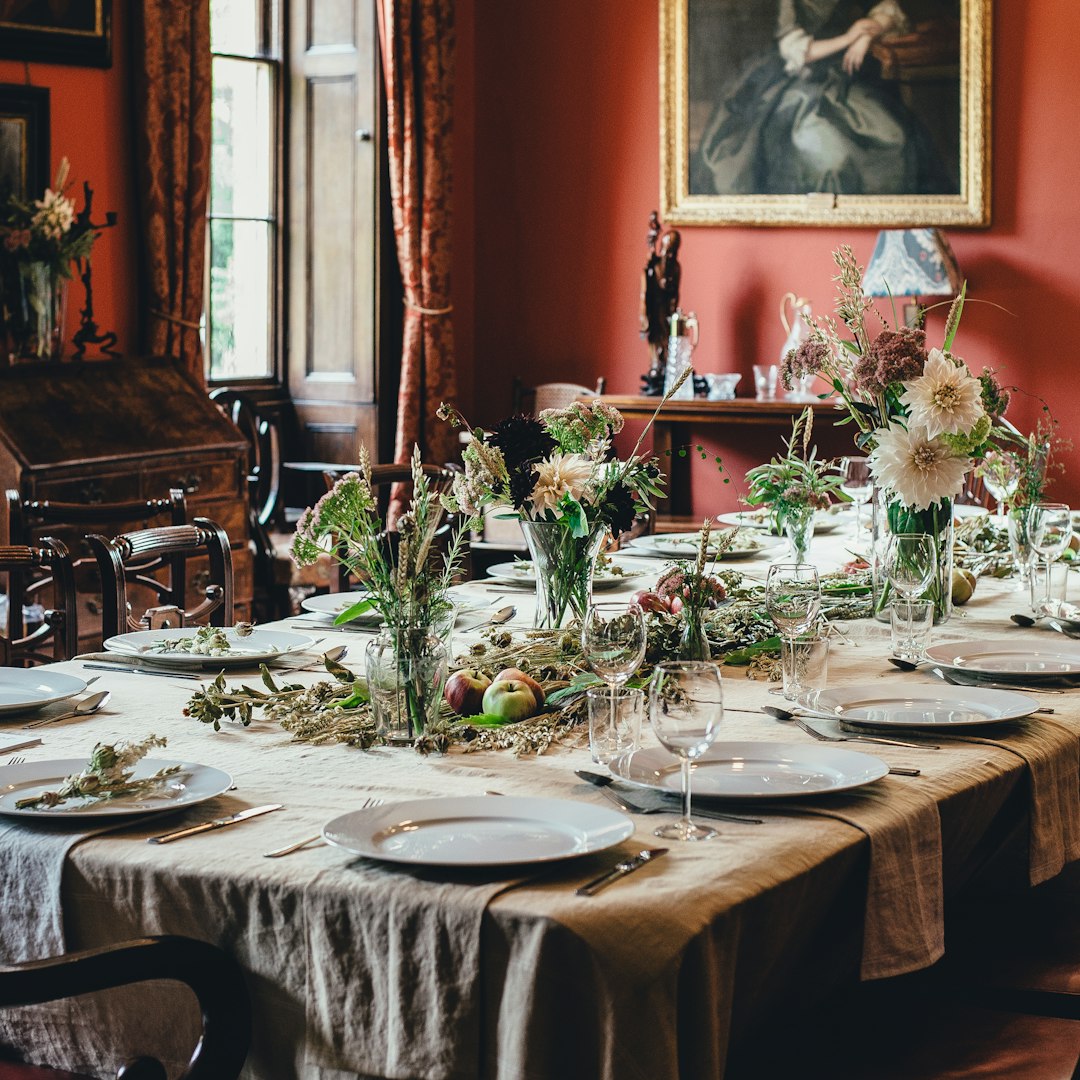
What are the best point and shoot camera brands for beginners?
Canon, Nikon, and Panasonic are excellent for beginners due to their user-friendly interfaces, reliable autofocus, and helpful automatic modes. Models like the Canon PowerShot SX740 HS and Nikon Coolpix series offer great zoom and easy handling. Olympus Tough TG-6 is perfect if you want ruggedness without complexity.
Read more about “What Is Fujifilm Known For? 7 Surprising Insights! 📸”
How do I choose the right point and shoot camera for my needs?
Start by defining your primary use: travel, street, wildlife, or vlogging. Then consider sensor size (larger is better for quality), zoom range, video capabilities, and ergonomics. Don’t forget battery life and connectivity features. Trying cameras in-store or renting can help you find the perfect fit.
Read more about “Discover 15 Top Camera Brands to Capture Your Moments! 📸”
What are the key features to look for in a point and shoot camera?
- Sensor size: 1-inch or larger for better image quality.
- Lens aperture and zoom: Fast lenses (f/2.8 or wider) and zoom range that suits your style.
- Image stabilization: Crucial for sharp handheld shots.
- Video quality: 4K video is standard on premium models.
- Viewfinder: EVF helps in bright light and improves framing.
- Connectivity: Wi-Fi and Bluetooth for easy sharing.
- Battery life: Enough to last your shooting sessions.
Read more about “15 Must-Know Camera Models and Prices for 2025 📸”
Are point and shoot cameras still worth buying in the age of smartphones?
Absolutely! While smartphones are convenient, point and shoots offer superior optical zoom, larger sensors, better low-light performance, and manual controls. They’re perfect for enthusiasts wanting more creative freedom and image quality beyond what phones can deliver.
Read more about “Which Brand Has the Best Camera Phones? Discover the Top 10 Picks for 2024! 📸”
What are the top-rated point and shoot camera brands for travel photography?
Sony RX100 series, Panasonic Lumix ZS/TZ series, and Canon PowerShot G series are favorites for travel due to their compact size, versatile zooms, and solid image quality. Olympus Tough TG-6 is ideal if you want durability for adventure travel.
Read more about “Top 10 Waterproof Camera Brands to Capture Every Adventure 🌊 …”
Can point and shoot cameras produce high-quality images like DSLR cameras?
While DSLRs and mirrorless cameras with larger sensors and interchangeable lenses generally offer superior image quality, premium point and shoots with 1-inch or APS-C sensors (like the Sony RX100 VII or Fujifilm X100V) come impressively close, especially for casual and enthusiast photographers.
What are the most affordable point and shoot camera brands available in the market?
Brands like Canon, Nikon, and Kodak offer budget-friendly models with smaller sensors and basic features. The Canon PowerShot Elph series and Nikon Coolpix A1000 are good entry points. However, be cautious with lesser-known brands that may compromise on quality and support.
Read more about “10 Emerging Camera Brands Transforming Photography 📸”
How important is image stabilization in a point and shoot camera?
Image stabilization is crucial, especially if you shoot handheld at longer zooms or in low light. It helps reduce blur caused by camera shake, resulting in sharper photos and smoother videos.
Read more about “10 Affordable Camera Brands with High-Quality Features 📸”
Should I prioritize zoom range or sensor size?
It depends on your shooting style. If you need to capture distant subjects (wildlife, sports), prioritize zoom range. If image quality and low-light performance matter more (portraits, street photography), prioritize sensor size.
Reference Links 📚
- Sony Official Cyber-shot Compact Cameras
- Canon PowerShot Cameras
- Panasonic Lumix Cameras
- Fujifilm X Series Cameras
- Ricoh GR Series
- Olympus Tough Cameras
- Nikon Coolpix Series
- Leica C-Lux
- How do I choose a point and shoot camera under $400? – Photo Stack Exchange
- New York Times Wirecutter: Best Point and Shoot Cameras
- PCMag: Best Point and Shoot Cameras
Ready to capture your world with the perfect point and shoot? Your next great photo adventure starts here! 📸✨
